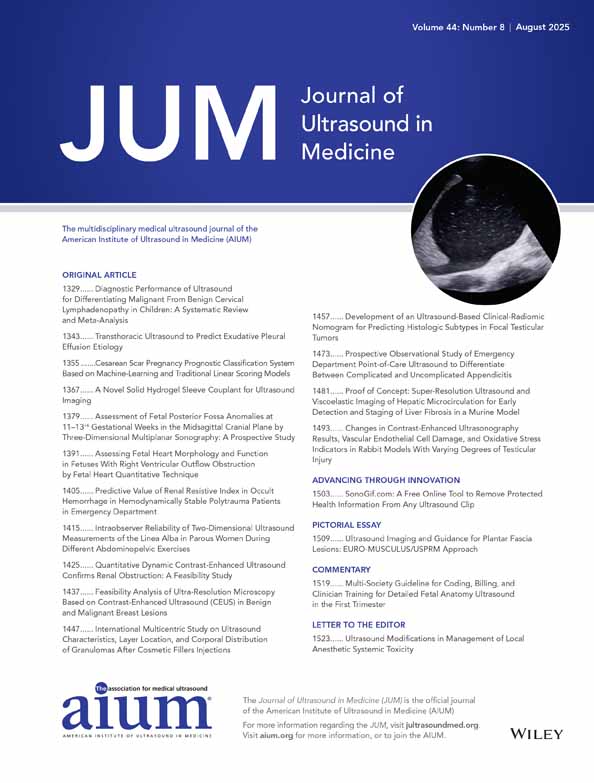Diagnostic Performance of Ultrasound for Differentiating Malignant From Benign Cervical Lymphadenopathy in Children
A Systematic Review and Meta-Analysis
The authors thank Ji Sung Lee, PhD (Department of Clinical Epidemiology and Biostatistics, Asan Medical Center, University of Ulsan College of Medicine, Seoul, Korea) for statistical assistance. The authors declare no conflict of interest.
Abstract
Objectives
To evaluate the diagnostic performance of ultrasound (US) features used to differentiate malignant from benign cervical lymphadenopathy in children.
Methods
PubMed and EMBASE were searched for articles reporting the diagnostic performance of US features to differentiate benign and malignant cervical lymphadenopathy in children. Article quality was evaluated using the QUADAS-2 tool. Sensitivity and specificity were pooled using a bivariate random-effects model. Further sensitivity analyses and meta-regression were performed to determine the potential source of heterogeneity. The area under the receiver operating characteristic curve was calculated using the hierarchical summary receiver operating characteristic model.
Results
Ten articles (1077 children) were included. Among the retrieved US features, abnormal vascularity, heterogeneous echogenicity, abnormal hilum echogenicity, and long-axis/short-axis (L/S) ratio were significantly associated with malignant lymphadenopathy, with pooled diagnostic odds ratios of 36 (95% confidence interval [CI]: 14–92), 17 (3–91), 16 (5–54), and 7 (5–9), respectively. The most sensitive US features were abnormal hilum echogenicity (0.86, 95% CI: 0.66–0.95) and heterogeneous echogenicity (0.84, 95% CI: 0.25–0.99). Abnormal vascularity (0.91, 95% CI: 0.82–0.97) was the most specific. Substantial heterogeneity was found in both sensitivity and specificity (I2 > 50%; P < .01), although the source was not revealed.
Conclusion
Among US features, abnormal vascularity, heterogeneous echogenicity, abnormal hilum echogenicity, and L/S ratio are useful for differentiating malignant from benign cervical lymphadenopathy in children, showing good diagnostic performance. These findings should be carefully interpreted due to unexplained heterogeneity, which may lower the validity of the pooled estimates.
Open Research
Data Availability Statement
The data that support the findings of this study are available from the corresponding author upon reasonable request.




